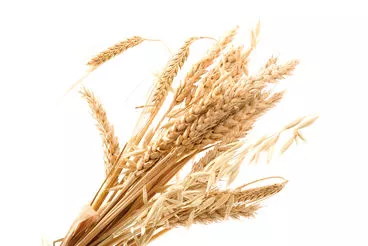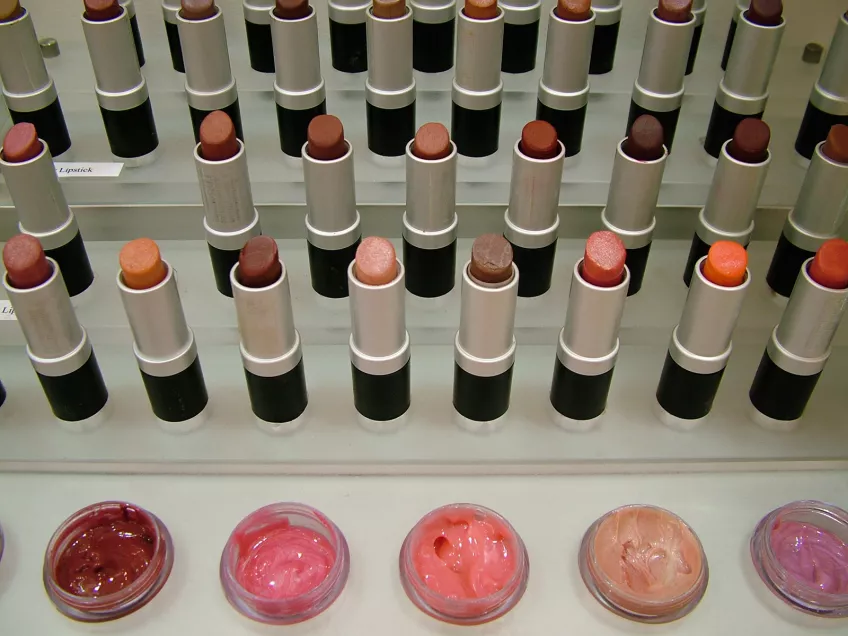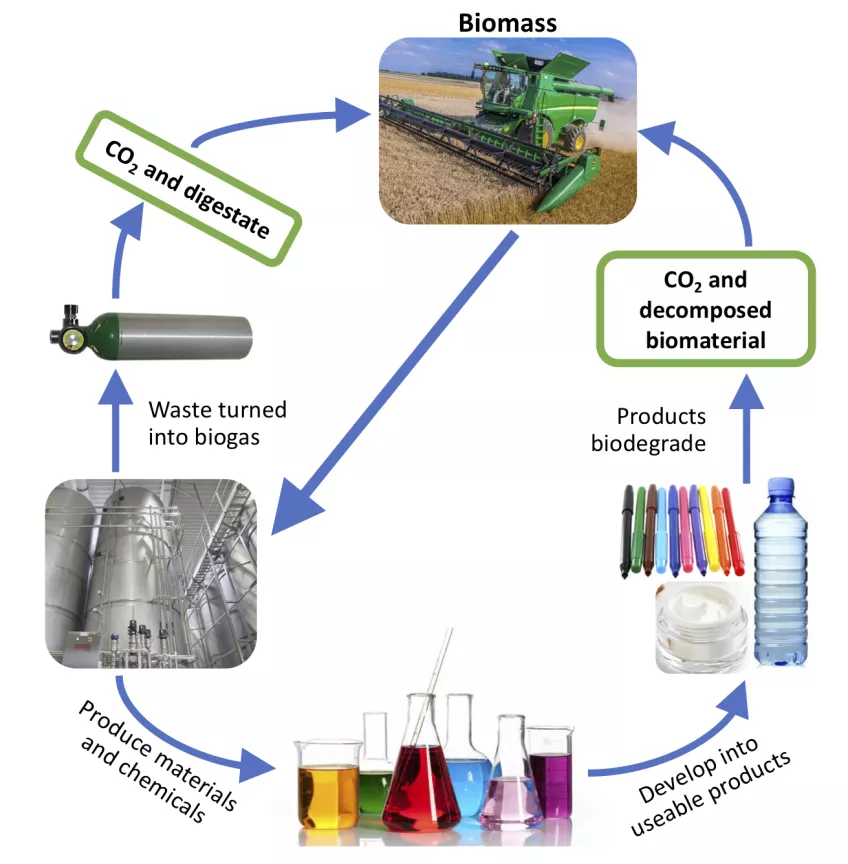Biorefineries
A refinery is a factory where raw materials are transformed into useable products such as chemicals. Biorefineries perform the same role, but with biological raw material (biomass) such as plants or microorganisms instead of traditional chemicals.
Biomass is a renewable source of raw material, as we can always grow more, unlike commonly used fossil fuels. In order to use biomass, the chemical reactions involved are usually similar to those found in nature. This means that it is possible to recycle those products made in biorefineries when the products are no longer of use, ensuring that the production of materials and chemicals can be achieved sustainably. Ideally biorefineries do not produce waste material as biomass is lost – instead the excess biomass left after production of the economically most interesting products can be used to produce biomethane for use as fuel.
What kinds of raw material are used?
The most common renewable resources used in biorefineries are crops such as wheat, rapeseed, corn, and other agricultural plants. Trees can also be used, as well as microorganisms found in water, such as algae. In order to be both as environmentally friendly, and as economically efficient as possible, waste from the agriculture, forest management, or food industries are used whenever possible. The raw material could then be, for example, waste from abattoirs, the unused stalks from sugar beet crops, or frying fat from restaurants.
What kinds of product are made in biorefineries?
Most people automatically think of fuels such as biogas, biodiesel, and bioethanol when they hear the term biorefinery. It is possible however, to produce almost any product in a biorefinery. For example, it is possible to make biobased plastic bags, bottles, spectacles, and pencils. Biobased home furnishings and the interiors of cars can also be created with biobased products. Currently biobased products include industrial oils for use in engines, lacquers for protective coatings on furniture, paints and coloring products used in the construction industry, or substances used in the cosmetic industry for skin and hair products!
Using biomass in industry is a growing field with lots of active research – as we learn more about the methods needed for production in biorefineries, we will be able to produce completely new products with new characteristics that are not possible with traditional methods of production used today.
How are biorefineries part of the environmental cycle?
The products made in a biorefinery, such as bioplastics, can be engineered to be biodegradable. In other words, after these products are no longer used and have been thrown away, they will decompose and act as nutrients for new plants and animals. In this way, production is more sustainable, and the waste products do not accumulate in nature, destroying the environment. The picture below illustrates how the biorefineries are a part of the environmental cycle:
How does it work?
Imitating chemicals reactions that are found in nature is a part of the field of biotechnology. When this is done in a biorefinery, or another industrial context, it is called industrial biotechnology. Within biotechnology, microorganisms such as fungi or bacteria are used to perform the desired reactions. This is not a new process – humans have used microorganisms such as yeast for thousands of years in order to produce bread, cheese, beer, and wine. A modern example of this at work is that we now use different types of microorganisms in our water treatment plants, to get clean water.
Sometimes the whole of the microorganism is not needed in the process, but only their enzymes. Enzymes are nature’s catalysts, assisting in chemical reactions without reacting themselves, and they exist in everything that is alive in order to enable organisms to digest food. In human saliva, for example, the enzyme amylase breaks down starch into simple sugars which the body can then use for energy.
New opportunities!
Over the last few decades, researchers in both universities and in industry have been intensely studying these enzymes and the spectacular ability of microorganisms to both break down and build up molecules. Because of this, enzymes will now not only be found in washing detergents, but will be involved in the production of many more products found in our daily lives. There is an enormous potential for renewable biobased resources in a way that has not been possible before.




